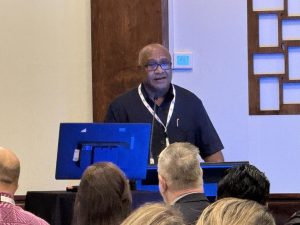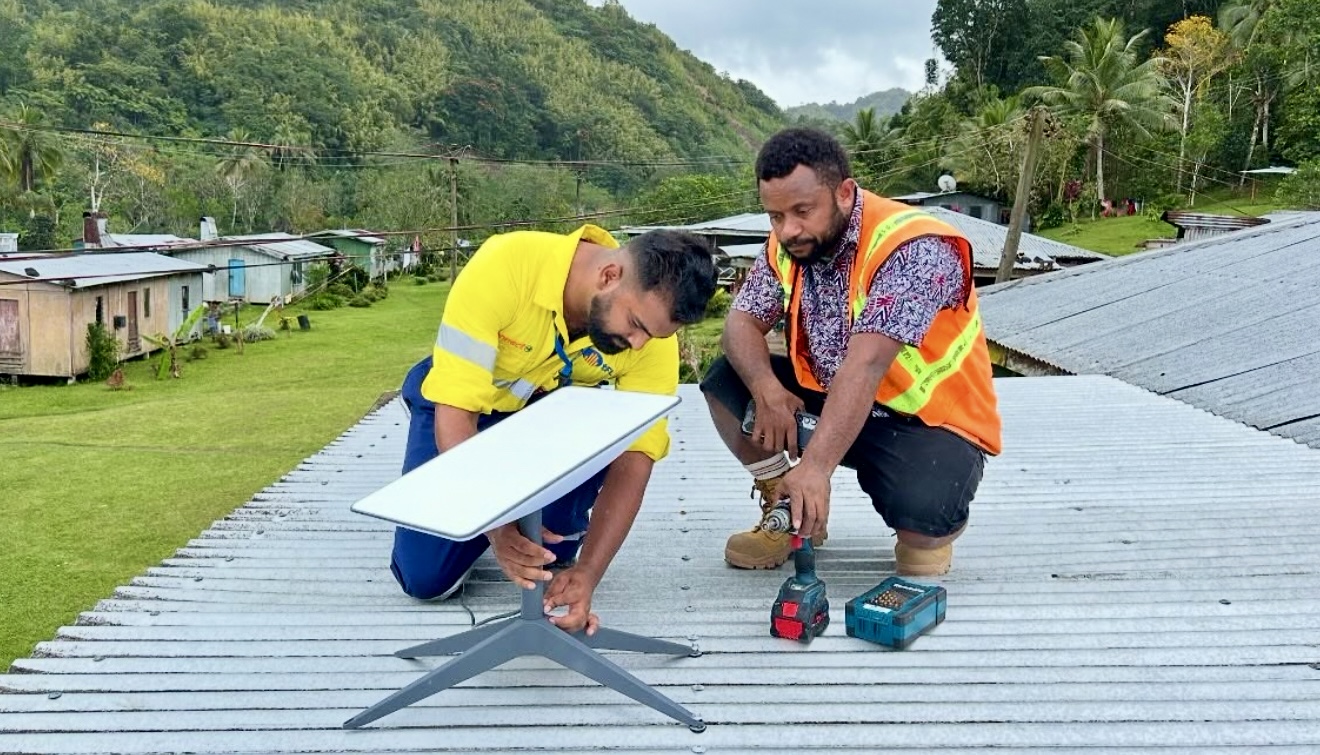ONE hundred and twenty six sites in Fiji’s rural areas will be the first to get connected to Government’s Starlink-based, managed Wi-Fi model of data connectivity that is ready “for immediate deployment in underserved areas”, according to Minister for Trade and Communication Manoa Kamikamica in his speech on the rollout of Government’s Universal Service Scheme (USS) in Parliament last week.
This is Phase One of the USS, slated to cost $3m and to benefit 11,300 Fijians who live in these fringe areas and who had long ago lost the rat race for data speed simply because available (and allowed by license) technology to take the service to them is too costly.
As Mr Kamikamica shared in his speech: “The ITU (International Telecommunications Union) reports that extending connectivity to rural and remote areas often incurs costs up to ten times greater than urban deployments, which explains why commercial operators are reluctant to invest.
“This was the same when we assessed here in Fiji.
“Initial costing for terrestrial towers was in excess $400,000 and $500,000 per site.
“This would have limited us to 35 or 40 sites, not counting OPEX (operating expenses), which to no surprise, would surpass CAPEX (capital expenses) in a couple of years. In contrast, our current satellite-based model costs approximately $29,000 per site, including installation, equipment and solar power where required.”
New era
No doubt, this is a new era for rural connectivity in Fiji, thanks to Government giving the greenlight to a technology ideally suited for the job.
“The ITU highlighted the growing role of Low Earth Orbit (LEO) satellite technologies in bridging connectivity gaps in hard-to-reach areas and disaster-prone regions,” Mr Kamikamica said.
“We responded by establishing an enabling policy environment to welcome new satellite technologies, and today we are reaping the benefits.
“As part of our due diligence, in November 2024, TAF conducted live demonstrations of Starlink’s low-earth orbit satellite solution across multiple terrains in Fiji.
“The results were decisive. The solution performed reliably and consistently, particularly in the rugged and dispersed geography of our islands. This enabled TAF to adopt a satellite-based, managed Wi-Fi model for immediate deployment in underserved areas.”
Lost decade
If Mr Kamikamica’s speech is anything to go by, connecting Fiji’s underserved and isolated areas is no longer just political rhetorics.
In fact, the USS is not a new scheme.
In a previous interview with this newspaper when the entry of Starlink into the Fiji market rehashed the USS topic and the Universal Service Fund tied to it, the Telecommunications Authority of Fiji (TAF) had clarified that this was a scheme established under Part 3, Division 4 of the Telecommunications Act 2008 and further strengthened in the subsidiary legislation Telecommunications (Declaration of Universal Service Areas) Order 2013, in which 240 villages had been identified as having “poor or no connectivity.”
“The TAF levy for universal service, set at 0.5per cent of licensees’ gross revenues (net of settlement) … is calculated based on audited financial statements, and new entrants, such as Starlink, are also subject to these requirements,” TAF chief executive officer Prit Chand had told The Fiji Times.
Previously administered by the Ministry of Economy, the TAF Levy and the mantle to rollout the USS now appears to have shifted to TAF, under “guidance from the Universal Service Advisory Committee, made up of Permanent Secretaries from the Ministries of Communications, Finance, and Rural and Maritime Development, alongside the heads of TAF and the Fijian Competition and Consumer Commission, and representatives from licensed telecommunications operators,” according to Mr Kamikamica.
But not before a decade of missed opportunity, as he further revealed in his speech.
“It must be said—since the Universal Service Fund (USF) was established in 2013, not a single dollar had been deployed for its intended purpose,” he told Parliament.
“This inaction represents a missed decade of opportunity, during which thousands of Fijians in rural and remote areas remained digitally excluded.
“We are now changing that narrative. This Government is deploying the Universal Service Fund for the first time, and doing so with precision, innovation and urgency.”
Strategic tool
The USS, seen by Government as a “strategic tool” to “bridge the digital divide and realise the goals of the National Digital Strategy 2025–2030”, has already verified the 240 areas that were initially identified and there is a likelihood of more sites being added to the list.
“The TAF, in collaboration with the Ministry of iTaukei Affairs and other stakeholders, has used a data-driven framework to verify the previously declared 240 Universal Service Areas —remote communities where the service providers had little incentive to invest,” Mr Kamikamica said.
“Surveys, socio-economic profiling and community consultations informed this process. The framework prioritised areas based on:
Remoteness and terrain;
Population clusters;
Income levels;
Proximity to health centres, schools, and economic activity; and
Disaster risk and recovery needs.
“This ensures the USS is not just equitable but tailored to address the unique context of each of the 240 areas.
“Mr Speaker Sir, we are not stopping at these 240 communities. TAF continues to work with stakeholders to identify any and all remaining communities that are currently not covered.
“I thank the communities who have reached out directly and these have been sent to TAF for verification and will be added to this programme,” Mr Kamikamica told Parliament.
Rollout
To achieve what’s at the heart of the USS initiative, which is that “every Fijian — regardless of geography or circumstance — deserves meaningful and secure access to connectivity and the vast opportunities that it offers”, Phase One of the USS will be rolled out with the following distribution:
36 sites in Kadavu
36 sites in Lau
15 sites in Lomaiviti
13 sites in Namosi
2 sites in Navosa
24 sites in Tailevu
“This is a deliberate strategy, focusing on areas with the greatest connectivity gaps and where the impact will be most transformative,” Mr Kamikamica said.
Each site will feature:
Minimum two Wi-Fi access points,
Solar-powered systems for off-grid sites,
Emergency Satellite phones for disaster response,
A voucher-based access model to manage usage and encourage responsible digital behaviour.
“These systems are energy-efficient, modular and technology-neutral — allowing for future upgrades or backhaul replacements without overhauling infrastructure,” he added.
While the fund disbursement mechanism is being worked out between TAF and the Ministry of Finance, deployment of Phase One, according to Mr Kamikamica, will first prioritise sites with existing electricity supply in Namosi, Navosa and Tailevu, followed by solar-powered sites as equipment arrives.
“Planning for Phase 2—which will connect the remaining 114 communities—is already underway, with validation of sites in collaboration with provincial offices,” he said.


